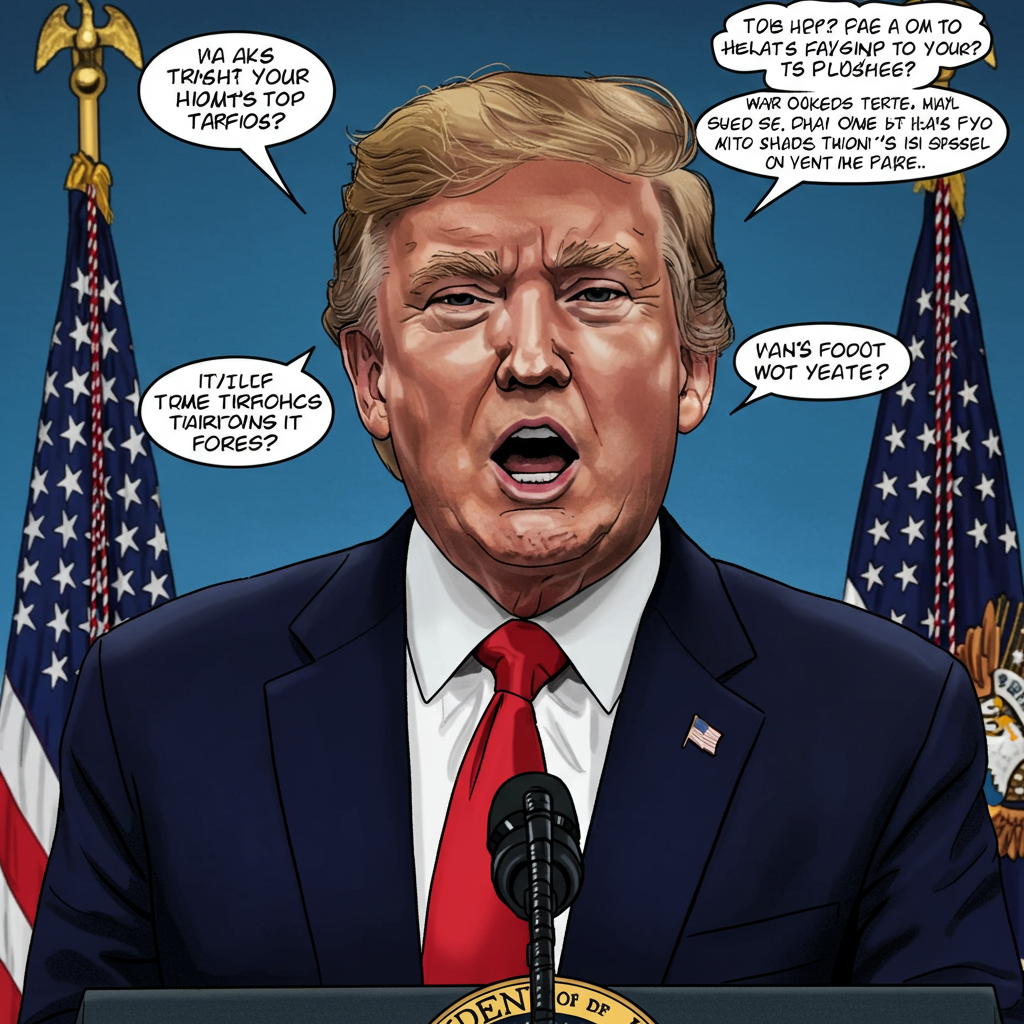Major financial institutions in the United States have successfully navigated the Federal Reserve’s annual assessment of their financial resilience, with all 22 participating banks receiving a passing grade. The central bank announced the results Friday, indicating that even under a simulated severe economic downturn, these “too big to fail” entities would maintain sufficient capital to continue operating. However, a key takeaway from this year’s evaluation is that the hypothetical scenario tested was notably less challenging compared to the previous year, raising questions about the true measure of their fortitude against future shocks.
Understanding the Fed’s stress tests
The Federal Reserve’s stress tests, formally known as the Dodd-Frank Act Stress Tests (DFAST), were established in the aftermath of the 2008 financial crisis. Their primary purpose is to gauge whether the largest banks in the U.S. financial system possess adequate capital buffers to withstand a severe recession or other significant economic distress.
Why They Matter: Assessing “Too Big to Fail”
Often referred to as a check on “too big to fail” institutions, these tests are essentially a rigorous academic exercise. The Fed constructs a hypothetical adverse economic scenario impacting the global economy and then measures its theoretical effect on the balance sheets, capital levels, and solvency of the nation’s most critical banks. The goal is to ensure that even in a crisis, these institutions wouldn’t require taxpayer bailouts, preventing a repeat of the 2008 collapse.
2025 Results: A Universal Pass
In the 2025 iteration, all 22 major banks subjected to the test successfully demonstrated they could remain solvent and stay above the minimum capital thresholds required by regulators. This perfect pass rate signals, within the framework of the test, that the U.S. banking system’s largest players are well-capitalized.
The Banks Tested
The institutions involved represent the cornerstone of the U.S. financial landscape, holding trillions in assets and operating businesses that span domestic and global markets. Prominent names among the 22 tested banks include financial giants like JPMorgan Chase, Citigroup, Bank of America, Morgan Stanley, and Goldman Sachs.
Theoretical Losses Absorbed
Despite the positive outcome, the simulated downturn did project substantial theoretical impacts. The Fed’s scenario indicated that the tested banks would collectively absorb roughly $550 billion in losses. This figure highlights the significant scale of potential damage a severe economic shock could inflict, even on well-capitalized institutions.
The Catch: A Less Stringent Scenario
While a perfect pass rate is inherently positive, the Federal Reserve itself acknowledged that the 2025 test was “less vigorous” than previous iterations. This difference significantly impacts how the results should be interpreted. The hypothetical economic environment modeled this year was less severe across key metrics compared to the 2024 scenario.
Comparing 2025 vs. 2024 Shocks
The 2025 simulation envisioned a major global recession leading to specific market declines:
Commercial real estate prices falling by 30%.
Housing prices decreasing by 33%.
Stock prices dropping by 50%.
The unemployment rate rising to 10%.
In stark contrast, the 2024 scenario was designed with deeper theoretical shocks:
Commercial real estate prices falling by a sharper 40%.
Housing prices declining by 38%.
Stock prices plummeting by an even steeper 55%.
These less pronounced simulated drops in 2025 directly translate to less theoretical damage to bank balance sheets and a reduced risk of potential failure within the test’s parameters. Given the less severe test, the universal passing outcome was widely anticipated once the scenario details were known.
Why the Change? Fed’s Explanation
The Federal Reserve did not explicitly state the precise reasons for scaling back the severity of the 2025 test scenario. However, the central bank’s statement mentioned that previous tests had shown “unintended volatility” in results. The Fed plans to solicit public and industry feedback as it considers adjustments to stress tests in future years. This suggests a desire to refine the testing methodology, though the impact of a less vigorous test on assessing true resilience remains a point of discussion.
Critical Omissions: Private Credit and Private Equity
A significant point of concern highlighted by analysts and reports is what the 2025 stress test didn’t* include. The Fed chose not to heavily test banks’ exposure to certain asset classes, raising questions about blind spots in the resilience assessment.
What Was Left Out?
Specifically, the test did not focus heavily on banks’ exposure to private equity assets, which the Fed argued are typically held long-term and not usually sold during times of distress. More notably, there was no testing whatsoever for bank exposure to private credit.
The Growing Concern of Private Credit Risk
Private credit has emerged as a substantial and rapidly expanding asset class, estimated now at around $3 trillion. This market operates largely outside traditional banking and public markets, making it less transparent. Disturbingly, even researchers within the Federal Reserve system have raised alarms. The Federal Reserve Bank of Boston, for instance, recently highlighted that private credit is growing “alarmingly quickly” and could potentially pose a systemic risk to the financial system under a severe adverse scenario. The absence of any testing or measurement of bank exposure to this potentially risky, fast-growing sector in this year’s test methodology is therefore a critical omission, especially as stress tests are explicitly designed to identify such systemic vulnerabilities.
Implications of Passing: Capital Returns
Successfully passing the rigorous (or less rigorous) stress tests carries significant implications for the major banks and their shareholders. Regulatory approval based on these results is a prerequisite for banks looking to return capital to investors.
Dividends and Buybacks
With a clean bill of health from the Fed’s 2025 assessment, the tested banks are now cleared to proceed with plans to issue dividends to shareholders and repurchase shares of their stock. These actions are key ways banks distribute profits and return value to investors.
Impact on Investors and Banks
For investors, this means potential increases in dividend income and a boost to share value through reduced share count. For the banks, it allows them to manage their capital structure, reward shareholders, and signal financial health, provided their individual capital plans are approved by the Fed following the test results. Details of these dividend and buyback plans are typically announced the week after the stress test results are released.
Frequently Asked Questions
What were the key results of the 2025 Federal Reserve stress tests?
All 22 major banks tested by the Federal Reserve passed the 2025 stress tests, demonstrating they could remain solvent under a simulated severe economic downturn. This outcome allows them to return capital to shareholders via dividends and stock buybacks. However, the tests themselves were considered less severe than in 2024, particularly regarding simulated declines in real estate and stock markets and a rise in unemployment.
Why were the 2025 Fed stress tests considered less rigorous than previous years?
The Federal Reserve’s hypothetical economic scenario for 2025 included less severe simulated shocks compared to the 2024 test. For instance, the projected drops in commercial real estate (30% vs. 40%) and housing prices (33% vs. 38%), as well as the rise in unemployment (10%), were less pronounced. The Fed stated that previous tests showed “unintended volatility” and that they plan to seek public comment for future adjustments, but did not explicitly link this to the reduced severity.
What does passing the stress test mean for major banks and investors?
Passing the Federal Reserve stress tests is crucial for major banks as it grants them regulatory permission to return capital to shareholders. This is typically done through issuing cash dividends and buying back shares of their own stock. For investors, this means they can expect potential increases in payouts and share value, signaling confidence in the bank’s financial stability and profitability.
Conclusion
The 2025 Federal Reserve stress tests deliver a headline message of reassurance: all major U.S. banks are deemed resilient and well-capitalized, even when faced with significant theoretical losses. This universal passing grade clears the path for these institutions to return substantial capital to their shareholders, a positive signal for investors. However, the acknowledged reduction in the test’s severity compared to the previous year, coupled with the complete exclusion of bank exposure to the rapidly expanding and potentially systemic private credit market, introduces complexity and raises important questions. While the Fed plans to seek public input for future test refinements, the 2025 results offer a snapshot of resilience based on a specific, arguably less demanding, set of assumptions. Understanding both the positive outcome and the nuances of the testing methodology is essential for a complete picture of the banking sector’s health.



